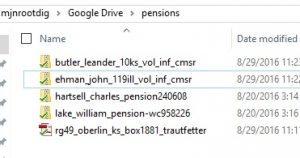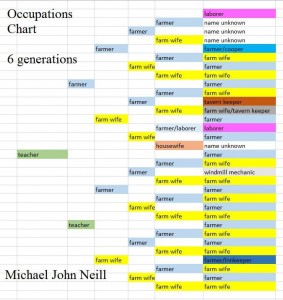Each presentation is a separate purchase.
Overview of the American Courthouse
This session provides an overview of the records to expect at the typical United States county courthouse–focusing on local vital, court, probate, and property records. It will include:
- a general overview of the general types of records to expect,
- use of indexes and finding aids;
- how to organize your searches and set a search strategy,
- preparing for an onsite visit.
Geared towards advanced beginner and beginning intermediate researchers. Michael has been researching his own genealogy in American courthouses since the 1980s and is an experienced courthouse researcher.

Female Ancestor Webinar
This presentation discusses approaches and techniques for determining an ancestor’s maiden name and locating “missing” females. Geared towards the advanced beginner or intermediate researcher, it focuses on American records and sources before World War I. The content is not specific to any one time period and many of the approaches can be refined for different locations or types of records. Concepts discussed will include:
- overview of women’s legal rights;
- property ownership;
- inheritance;
- citizenship;
- and strategies for making the most from what you can find.
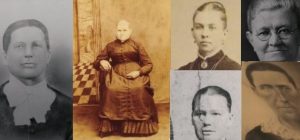
If you are stymied on your female ancestors–and half your ancestors are female–this presentation may give you the insight you need.
- Order a recording of the session ($19) for immediate delivery–includes handout. Regular price $25.
- If you ordered this presentation and did not receive your copy, please email me at the email address listed in your receipt.
AncestryDNA 2019 Version
This presentation has been recorded and is available for immediate download. If you ordered and did not receive, please email me at mjnrootdig@gmail.com and I’ll take care of it.
In this presentation, we will discuss new and not-so-new features of AncestryDNA matches, including:
- Groups
- Notes
- ThruLines
- Starred matches
- Filters
- Searches
Our focus will be on practical, straight-forward applications of these features with particular attention paid to problem-solving and documentation of your analytical process. Also discussed will be the creation of a customized spreadsheet to track your work and to assist in planning your analysis. Our goal is not to confuse you with how complicated we can make things, but to help you actually use the new tools at AncestryDNA to make the most of them.
And to do that—we’ll also discuss the drawbacks and potential pitfalls of approaches that are discussed.
This presentation has already been held. If you registered or pre-ordered and did not receive your download links–email me at mjnrootdig@gmail.com. This presentation (handout and presentation) can be ordered for immediate download via our secure ordering platform.
Attendees should have a basic understand of autosomal DNA matches.
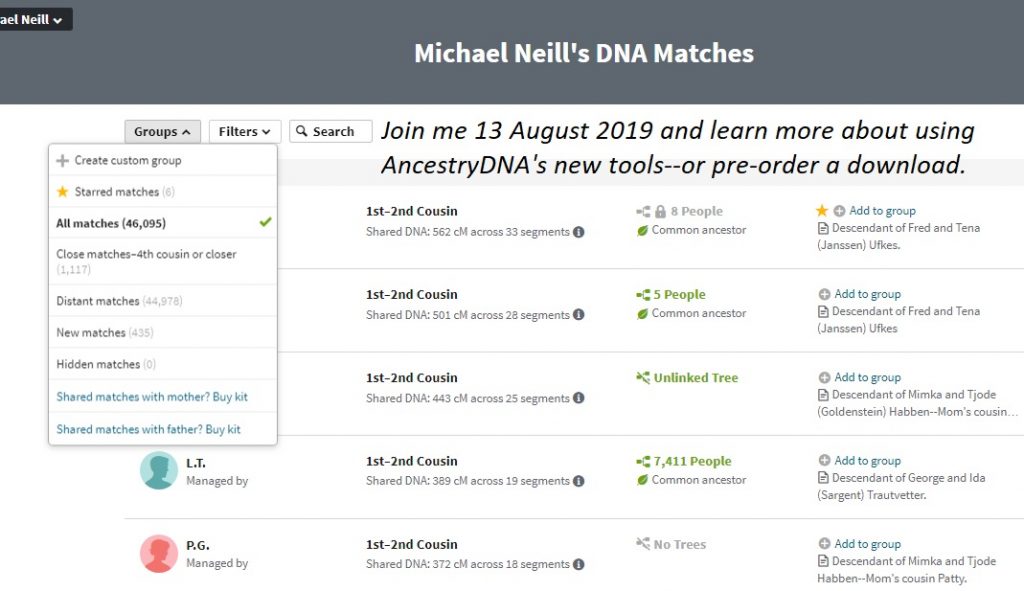
Tightwad Genealogy-2018 Version
Recording released–order for immediate download.
This presentation discusses a variety of ways that researchers can make more effective use of their genealogical research funds. This discussion will include, but not be limited to:
- Effective use of mailing lists, message boards, and Facebook groups
- Local societies and libraries
- Non-local Professionals versus locals “in the know”
- Alternate ways to obtain same record
- Alternate ways to obtain same information
- Places never to use
- Improving your own skills will save you in the long run
- Coordinating with other researchers
- Determining if it’s already been done
- Consultations instead of actually hiring research
- Others as time allows
Process your download securely here, handout and recorded copy of presentation included.
Using Online Trees
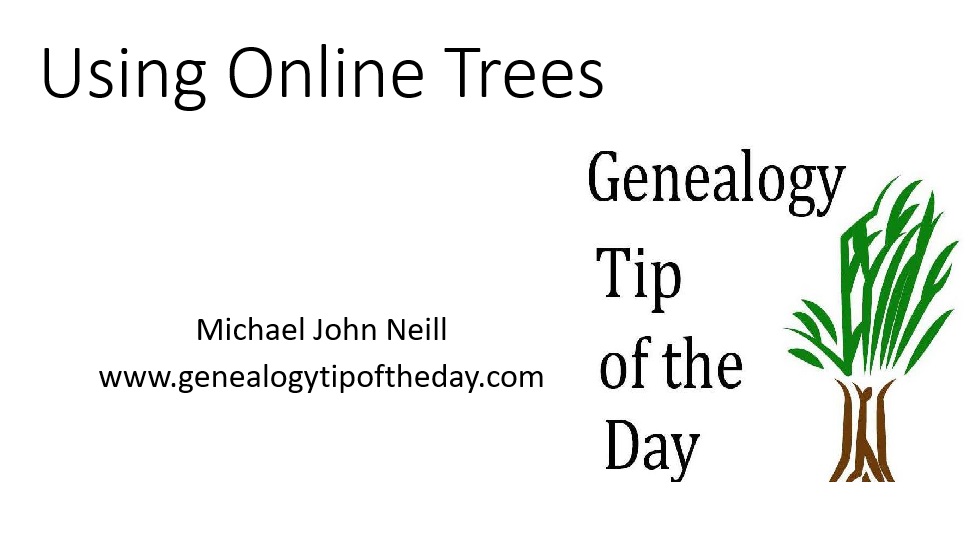 This session discusses using information and sources found in the “online trees” that some genealogists love and some genealogists hate. We discuss ways to analyze information in a tree, sorting out maybe good trees from probably not-so-good trees, keeping downloaded information separate from your “good information,” tracking the trees that you’ve used so you don’t waste time reviewing them again, times to use what you find in a tree in your own database, dealing with compilers, handling incorrect information, and more. The download of this presentation includes the fifty-minute presentation and the handout.
This session discusses using information and sources found in the “online trees” that some genealogists love and some genealogists hate. We discuss ways to analyze information in a tree, sorting out maybe good trees from probably not-so-good trees, keeping downloaded information separate from your “good information,” tracking the trees that you’ve used so you don’t waste time reviewing them again, times to use what you find in a tree in your own database, dealing with compilers, handling incorrect information, and more. The download of this presentation includes the fifty-minute presentation and the handout.
Order “Using Online Trees”–download is immediate and handout is included.
Avoiding “Fake” Ancestors
There is no way to be entirely certain a tree is one hundred percent correct. Ever. Humans will make errors. However there are some ways to reduce the number of errors in your tree, creating a more accurate tree for future generations and reducing the chance you create more brick walls for yourself in the process. This presentation is aimed at those who have been researching their genealogy for a while and would not consider themselves experts but are no longer real beginners either.
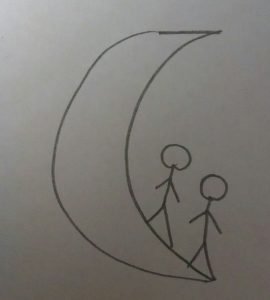
Moon People–probably not your ancestors!
This discussion will concentrate on:
- determining when to enter information into a database and when not to
- the elements of proof and evidence–with suggested ways to learn more
- responsible use of online trees for clues
- avoiding common and not-so-common errors
- why it is not the number of sources that matter
- finding it on 1,000 trees does not make it true
- additional ways to improve your research skills
This hour-long session can be ordered for download. Download includes PDF handout and recorded media file.
Beginning German Research
This session focuses on starting your German research. The session will include an overview of German genealogical sources (both online and offline), naming patterns and concerns, maps and other geographic find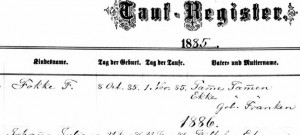 ing aids, basics of terminology and handwriting, and more. Intended for those who have not really started researching their German ancestors in Germany.
ing aids, basics of terminology and handwriting, and more. Intended for those who have not really started researching their German ancestors in Germany.
Download is immediate. Presentation can be viewed more than once. Handout included.
Crossing the Pond
This presentation discusses way to determine the “across the pond” origins for 18th and 19th century immigrants to the United States. The focus of this presentation is on sources and methods and are not specific to any country of origin. The bulk of the presentation discusses situations where the place of birth is not as easy as simply locating the immigrant’s death record, obituary, etc. Our discussion concentrates on situations where multiple records need to be used and where the establishment of the extended kin network is necessary.
Orders are processed immediately and presentation can be viewed as often as needed and is for personal use only.
Order here for immediate download.
Overview of Fold3.com
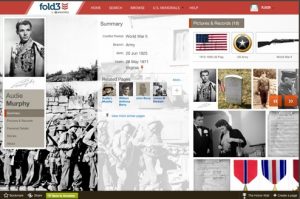 This session will provide a brief overview of the content on Fold3.com and will spend the bulk of the presentation time discussing how to determine what specific databases are on the site, how to effectively search for names and records, how to navigate search results, image navigation, manipulation and download, and questions from attendees.
This session will provide a brief overview of the content on Fold3.com and will spend the bulk of the presentation time discussing how to determine what specific databases are on the site, how to effectively search for names and records, how to navigate search results, image navigation, manipulation and download, and questions from attendees.
Download is immediate after ordering and includes handout. Presentation can be viewed as often as desired but is for personal use only.
Brick Wall Busters 2017 Version
This hour-long presentation (aimed at advanced beginner and intermediate researchers) focuses on research approaches to get you past “brick walls”. We will look at reasons why we have “brick walls” and how we may be making our own “brick walls.” Focus will be on problem-solving, getting past assumptions, realizing what we know versus what we think we know, and completely analyzing and understanding what we already have.
Order here for immediate download. Recorded presentation and handout included.
Basics of Citation
In this presentation,  we looked at several examples during the hour-long presentation and discussed the philosophy of citations in a down-to-earth, practical fashion. Our focus was on typical documents and sources researchers use. We did not focus on the arcane or unusual.
we looked at several examples during the hour-long presentation and discussed the philosophy of citations in a down-to-earth, practical fashion. Our focus was on typical documents and sources researchers use. We did not focus on the arcane or unusual.
One of my goals was to make citations less intimidating. I want people to cite their sources.
It is not the end of the world if your citations are not in the technically proper format. My goal is to make researchers less concerned about minute details and more concerned about the importance of citations and what information is crucial for later research and analysis. I don’t want to people to forgo citations because they’re worried about not doing them right.
The presentation can be ordered for immediate download–handout included.
Do I Cite it All?
Making “your case” is more than simply citing every document that mentions a date of birth, a date of death, a marriage, a parent-child relationship, etc. It is determining what to cite, and if no one document states the fact clearly, including all the relevant documents. Depending upon the situation, making your case may involve deciding what documents to use if you have fifteen sources that all provide a date of birth. We will see how to pick and choose sources when there are many of them and how to make your case when it takes multiple sources to reach a conclusion. We will look at three different examples (at least) from the 18th and 19th centuries.
Purchase media file and handouts. Download is immediate.
25 Brick Wall Strategies
If you’ve enjoyed our “Brick Wall” series, this one will revisit some of our more popular approaches along with new examples and a few new tricks thrown in the mix. Sometimes it never hurts to hear something again, if only for the reminder. This presentation will include a handout with the concepts discussed and brief examples demonstrating the approach.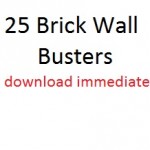
Order this presentation for immediate download.
Irfanview
One of the most popular image viewing and manipulation programs around that has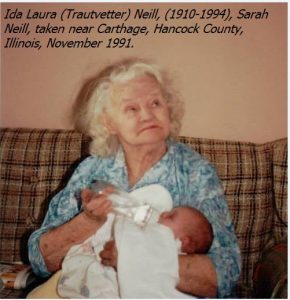 the best price–free! This presentation focuses on basic skills that are useful for the genealogist, including cropping, adding citations, adding text, adding metadata, batch renaming, and more. Geared towards those who don’t have much familiarity with the software.
the best price–free! This presentation focuses on basic skills that are useful for the genealogist, including cropping, adding citations, adding text, adding metadata, batch renaming, and more. Geared towards those who don’t have much familiarity with the software.
Order here ($7) for immediate download–handout included
Organizing Digital Media
This presentation is not software or operating system specific. It focuses on file organization, file naming, consistency, and reducing duplication of effort. Our focus is on an easy way that people will actually continue to do on a regular basis. Intricate and complicated organizational systems tend to be abandoned in favor of disorganized chaos. Avoid that temptation–our system is easy and is adapted from the paper system Michael’s used for 25+ years.
Order here ($6) for immediate download–handout included
Using the Bureau of Land Management Website and the BLM Tract Books
Federal land records can be a valuable source for genealogical information. This presentation discusses searching the BLM website for patentees and warrantees, creating effective searches, wildcard searches, and geographic based searches.
Not all individuals who received or obtained federal land were early settlers. There were states in the federal domain where federal land was being sold thirty years after statehood. 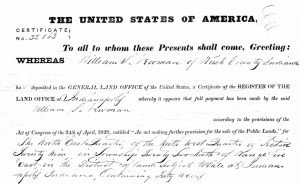
Not everyone mentioned in these federal land records actually acquired the federal land themselves or even settled on it. Many veterans (pre-US Civil War) obtained military land warrants which they sold or transferred to someone else. That someone else actually settled the property. The military veteran who obtained the warrant should appear in the BLM land patent index as warrant receivers are included.
A New Hampshire man who served in the War of 1812 and who never left the New Hampshire after the war may still appear in the BLM patent index site. And he may be listed under a warrant that was used to obtain property in Iowa.
Even though he never set foot within 500 miles of the Mississippi River. The tract books can be used to locate claims that were started but never completed. Those files are at the National Archives as well as the files for completed claims.
The presentation on using the BLM land patent site and the BLM tract books can be ordered for immediate download here.
Creating Families from pre-1850 Census Records
This presentation discusses how to analyze pre-1850 census records in order to determine the family structure that is suggested by those records. Enumerations for one household between 1810 and 1840 are analyzed in order to determine the number of children, ranges on their years of birth, and ranges on years of birth for the oldest male and oldest female in the household.
Creating Those Color Charts and Citing Images
Ever wondered how to create those color pedigree charts that are floating all over cyberspace? Ever wondered how to add citation/source information to digital images that you have created? We will see how to create both these items in this session which is geared towards those digital imaging skills are in their infancy.
Determining Your Ancestor’s Migration Chain
Your migrating ancestor probably did not travel alone—someone they knew likely went to the area before they did, when they did, or after they did. Perhaps all three events happened. Your ancestor may have travelled from point A to point B with a neighbor, relative, or associate. Sometimes researching those associates can assist with researching the actual ancestor. This session looks at ways to determine who the likely travelling companions are, how to determine what settlement pattern your ancestor was a part of, and how to use that information to enhance your research.
This session is aimed for intermediate level researchers.
Order the handout and presentation here for immediate download.
Maryland Land Records
My land records webinar on the online Maryland land records came off with only one hitch–the dog barked for about a minute during it.
I’m not certain when I’ll have time to record it again and those who attended live wanted to get their recording of it, so I’ve uploaded it. We’re selling it at a discounted rate of $8 (which we’re calling the Riley discount because that’s the dog’s name).
The presentation and handout can be ordered here for immediate download.
MDLANDREC has Maryland Colonial land patents and county record copies of local land records on it’s site. The land patents are searchable based upon name of property and the name of the patentee. Older land records are not indexed digitally, but copies of the county’s grantor and grantee indexes are online as well.
Copies of the record images can be downloaded as PDF files. There is no charge to use the image site. In some cases, entire grantee/grantor indexes can be downloaded. Pages from various record books can be downloaded individually. Images from the loose patents can be downloaded as well. This is a wonderful website for those with Maryland ancestor who were property owners.
Genealogical Problem Solving
This presentation is geared toward advanced beginners and intermediate level genealogists. In it, we discuss a problem-solving techniques and approaches that may be helpful when a person is “stuck.” Also discussed is a generalized problem-solving process. Our presentation is relaxed and informal–but there’s no 15 minutes of advertising at the beginning and the end of the presentation. That’s not how our presentations are made. It’s entirely content.
Genealogical Problem-Solving can be purchased for immediate download–handout and media file included.
Charts, Charts and More Charts.
Readers of the newsletter know that I love charts–and I’m not talking about pedigree and family group charts. Instead I’m talking about charts that organize information you have in order to see what’s missing, notice patterns, and organize your research. In this webinar, I talk about key elements to include in any chart, troubleshooting before you get started, brainstorming, and ways to get creative with your data. Geared towards advanced beginners and intermediate researchers. –add to cart
“Writing Proof Summaries and Making Your Case”
This presentation includes an overview of organizing your information in a coherent way so that your point is clearly made. Geared to the intermediate genealogist, we will focus on clearly making an argument, considering all reasonable options, eliminating unreasonable possibilities, choosing evidence, and organizing relevant research. Brief discussion of the “Genealogical Proof Standard” included. Handout included–registrants are entitled to a complimentary recording if desired. Download handout and presentation for $8.
“Preparing for a Trip to the Family History Library”
There’s more to going to the Family History Library in Salt Lake than simply arriving at the Library with a vague set of goals. For the past ten years I have lead a group of researchers to the library every May. In this webinar, we will see ways to plan for your time at the library to make the most of your time there. For many researchers, a trip to the Family History Library is a significant expense.
The following items are discussed:
- Use of the card catalog
- What you should do the moment you walk in the library
- Creating a search strategy that emphasizes what’s at the library instead of what may be available elsewhere
- Determining when research may be best done elsewhere on a certain family or location
- Creating effective research lists to make better use of your research time, track what you do while at the library, and create citations upon return home
- Organizing tasks while at the library to take advantage of the structure of the library
- Utilizing fee-based databases at the library unique to your personal research
- Onsite organizational strategies
- Tracking paper and digital copies
- What to do on your research when the library is closed (for those who just can’t put their research away)
This has already been given and is available for immediate purchase and download. If you pre-registered for a download and have not received it, please forward your receipt to mjnrootdig@gmail.com and I’ll send you the download link. You do not need to repay
Using Free Passenger Lists at FamilySearch
The vast majority of United States passenger lists are available for free on FamilySearch. In this session, we look at determining what lists are on FamilySearch and effective strategies to search and navigate the site in the best way possible. Also discussed is the development of search parameter templates in order to assist with problem solving and search refinement.
Order and download here for $8.
Using Free US Probate Records on FamilySearch
This session discusses how to determine what US probate recordsFamilySearch has online, how to navigate and search those records, and the elements of record analysis. Most of the probate materials for the United States online at FamilySearch are unindexed and an effective search strategy needs to keep that in mind. Researchers can’t simply type a name in a box and find these records.
Order and download here for $8.
Determining if Your Soldier with Pre-1866 Military Service Received a Pension or Benefit
This hour-long session will discusses sources and methods for determining if your ancestor who served in the US military in the Civil War or before qualified for a military pension or bounty land. There are a variety of finding aids and sources for determining if your ancestor (or his widow) received a pension or other benefit. Once you’ve determined that your ancestor received a benefit, records at the National Archives may provide significantly more information on your ancestor.
Order and download here for $8.
Using Online City and Regional Directories
This session will provides an overview of city and regional directories that are online, discussing fee-based sites, free sites, search strategies to find online directories, and search strategies for using online copies of city directories. Several case studies involving specific directories and specific individuals will be discussed as well–with cases be representative of a variety of locations and individuals.
fee-based sites, free sites, search strategies to find online directories, and search strategies for using online copies of city directories. Several case studies involving specific directories and specific individuals will be discussed as well–with cases be representative of a variety of locations and individuals.
Where Do I Go From Here?
Ever find a document and wonder where to go next? After presenting a general strategy, we will look at a series of local records from five different states and see what research avenues are suggested by each document. Geared towards intermediate level researchers.
Purchase Where Do I Go From Here? for $8.
Probate Records on Ancestry.com–Part I
There’s a lot to searching the probate records at Ancestry.com .
.
I discussed the limitations of the site, search techniques, saving files, navigating the images, determining what you were really looking at, and more. I had a lot of questions and enjoyed giving the presentation very much. This provides an overview of using large set of records covering the entire United States. Probate records are not covered separately, but there is adequate background on these records included in the presentation.
If you’d like to order the presentation, your order can be processed here for $8. Download is immediate. Handout included.
Probate Records on Ancestry.com–Part II
Now that I’ve had time to get into the materials more deeply and have had questions from attendees, viewers, and blog readers, we continue our discussion and discovery with “US Probate Materials on Ancestry.com Part II.”
Part 2 includes:
- Searching the unindexed probate materials at Ancestry.com–remember that the index on Ancestry.com only scratches the surface of what is on the site
- Navigating the several search boxes and inventory interfaces
- Making certain you have gotten all the probate references for your person of interest that are on Ancestry.com
- Determining what additional may be on microfilm at FamilySearchand onsite at the courthouse
- Comparing Ancestry.com‘s coverage with that on FamilySearch. Ancestry.com does not have all FamilySearch microfilm on their website.
- And more–based upon your questions.
- Discussion will partially be via several examples
The medial file for the presentation and the handout is available for $8–download is immediate.
Using Free Online US Local Land Records at FamilySearch.org
Most of the local land records online at FamilySearch are not full name indexed. Searches must be conducted manually. Learn how to effectively search these records from home using theFamilySearch website. Note that not every county’s local land records are online. We will use representative examples from several different jurisdictions in the United States.
Purchase Using US Local Land Records at FamilySearch for $8.
Using the Free War of 1812 Pensions at Fold3.com
Digital images from the War of 1812 pensions are available free atFold3.com. See how to search and interact with this wonderful set of records. We will discuss organization of the records, search techniques, navigating the website and search results, downloading images effectively, and creating a search strategy.
Purchase War of 1812 Pensions at Fold3.com for $8.
Using Land Patents Online at the Library of Virginia
The Library of Virginia has digital images of thousands of colonial land patents from that state on its website. Fully searchable, this presentation will include an overview of what patents are on the site, how to search those patents, site navigation and downloading of images, and ways to use the patents to advance your knowledge of your ancestors.
Register for Land Patents Online at the Library of Virginia for $8.
Using Digital Newspapers at the Library of Congress
The Library of Congress has digital images of thousands of newspapers online for free. We will see how to navigate the site, determining what newspapers are in their online collection, creating effective search strategies, navigating search results, and interacting and download images.
Register for Digital Newspapers at the Library of Congress for $8.
Using the Lutheran (ELCA) Records at Ancestry.com
This presentation will provide an overview of digital images of ELCA congregational church records on the Ancestry.com site. Navigational and search techniques, limitations of available index, citation issues, download, and use of images will be discussed. Learn how to get the most out of this record set.
Order the ELCA presentation here (media file and handout) for only $7. Download is immediate.
Getting More From Newspapers
There is more to newspaper searching than obituaries and marriage announcements. In this presentation, we will see how to see what newspapers are available, both digitally and on microfilm. We will look at effective search techniques for online newspapers, including search structures, keyword searching, and more. We will also discuss approaches for accessing newspapers that are not available online. Order an immediate download of this product.
Effective Census Search Strategies for Ancestry.com
There is more to searching the online census than simply putting a name in a box and clicking. We will look at effective use of wildcards, soundex options, location parameters, and more. Included will be a discussion of a general organizational strategy so that searchers spend less time “going in circles. This presentation is not sponsored or endorsed by Ancestry.com and Michael John Neill is not an Ancestry.com employee. Order an immediate download of this presentation.
Our downloads are processed through Digital Product Delivery. You can read their terms and conditions here. Their privacy policy includes information on payment processing.
This website “Genealogy Tip of the Day” and “Rootdig” do not receive payment details when payments are processed. We are only provided notice of approved payment and item(s) ordered. We receive your:
- name
- mailing address (if you choose to provide it)
- email address (for contacting you with download information)
- comments you may make in the comment box on the order
